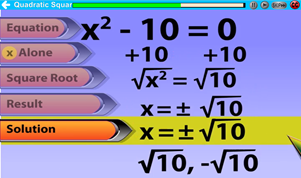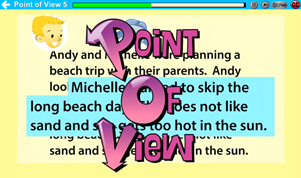
Transition Curriculum & Career Readiness
Easy-to-use online and accelerated transition curriculum and career readiness courses.

Online and Accelerated Courses to Support Student Transition Curriculum & Career Readiness
High school transition courses play a crucial role in preparing all students for the challenges and opportunities of post-secondary experiences. Let’s Go Learn’s commitment to equity, inclusion, and achievement for all students includes a curriculum that supports a successful journey to life beyond secondary school.
Our Transition Curriculum addresses two key areas.
- Courses that support teachers of students with disabilities fulfill IDEA 2004 mandates for their students
- Teachers with students with IEPs must have transition plans in place by the time students are 16. Transition courses must include appropriate topics such as postsecondary education, vocational education, integrated employment (including supported employment), continuing and adult education, adult services, independent living, or community participation (IDEA, 2004).
- Courses that prepare all students in their transition to post-secondary academics, career, and life skills
- Lessons address academic, social, and emotional aspects of transition, ultimately helping students achieve success in their educational and career pursuits.

Transition courses level the playing field for all students. Students who successfully complete high school transition courses are often better prepared for post-secondary life, education, and careers. They guide students to make informed decisions about their future.
Our Transition curriculum includes the following Edge courses.
- LGL Digital Literacy Edge
- LGL Financial Literacy Edge
- LGL Work & Life Skills Edge
- LGL High School Equivalency Math Edge
- LGL High School Equivalency ELA Edge

LGL Digital Literacy Edge
To live, work, and prosper in the 21st century, your students need proficiency in digital literacy. Research demonstrates that student equity and inclusion depend on all students mastering internet literacy, digital communication skills, critical thinking, and problem-solving. “Technology and social media are rapidly changing the way that citizens consume, create, and share information” (Office of Education Technology, US Department of Education).
Each lesson in our Digital Literacy Edge course provides direct instruction and practice for whole-class, small-group, or individual learning. Lessons are also aligned with the International Society for Technology in Education (ISTE) standards.
Whether at school, library, community center, or home, your students live their everyday lives in digital environments. Students read online content and e-books, communicate across the globe with video, audio, and text, and they personalize their learning with apps and websites. They use keyboards, not pencils and they venture into the virtual world from the traditional. Clearly, all students need digital skills so they can communicate, collaborate, and create safely and effectively in their daily lives and create digital footprints that they can be proud of.
Sample Digital Literacy Lessons
These lessons are integrated into LGL ELA Edge as well as are available for individual assignment or as a fixed-lesson course.
LGL Digital Literacy Edge Lesson Titles
| Internet Basics | Numbers Spreadsheets | Social Media Post | Protect Personal Info |
| Computer Basics | Photo Creation | Hashtags and Handles | Privacy Laws |
| Phone Basics | Graphic Creation | Chat Rooms | Advocacy |
| Network Basics | Documents | Video Conference | Engagement |
| Apps Stores Programs | Audio Creation | Digital Identity | Social Awareness |
| Search Browse | Video Creation | Net Etiquette | News Sources |
| Trust Validity | Game Creation | Collaboration | Digital Economy |
| Cloud vs Local | Design Process | Online Relationships | Global Citizenship |
| Content Types | Coding Programming | Device Protection | Artificial Intelligence |
| Share vs Send | Website Creation | Content Protection | Virtual Reality |
| Data Storage | Copyright Fair Use | Passwords | Voice Assistants |
| Data organization | Open Resources | Online Scams | Calendars |
| File Types | Dealing with Strangers | Travel | |
| Filtering | Text Message | Health Protection | Job Search |
| Text Creation | Direct Message | Cyberbullying | Final Challenge |
LGL Financial Literacy Edge
Promoting financial literacy is important for teenagers’s financial well-being and for society as a whole. It can lead to better financial decision-making, increased savings, reduced debt, improved retirement planning, and greater economic stability.
Financial literacy refers to the knowledge and skills that individuals possess to make informed and effective decisions about their finances. It encompasses various aspects of personal finance, including budgeting, saving, investing, borrowing, and understanding financial products and concepts. Financial literacy is essential because it empowers individuals to manage their money wisely, make informed financial decisions, and work toward achieving their financial goals. As of June 2023, 22 states have passed financial literacy bills.
Here are some key components of financial literacy:
- Budgeting: Understanding how to create and manage a budget is fundamental to financial literacy. This includes tracking income and expenses, setting financial goals, and making informed spending decisions to ensure that income covers expenses and allows for savings.
- Saving and Investing: Financial literacy includes knowledge about different saving and investment options, such as savings accounts, certificates of deposit (CDs), stocks, bonds, mutual funds, and retirement accounts like 401(k)s and IRAs. Understanding these options helps individuals make informed decisions about where to put their money to achieve long-term financial goals.

- Debt Management: Knowing how to manage debt responsibly is a critical aspect of financial literacy. This includes understanding interest rates, credit scores, and strategies for paying down debt efficiently. Financially literate individuals make informed decisions about taking on debt and paying it off.
- Financial Planning: Financial literacy involves setting and working toward financial goals, whether they relate to buying a home, funding education, saving for retirement, or starting a business. Creating a financial plan and understanding how to adjust it as circumstances change is essential.
Sample Financial Literacy Lessons
Ideal as transition curriculum. 30 lessons available as a fixed-lesson course or for teachers to individually assign each lesson.
LGL Financial Literacy Edge Lesson Titles
| Finance Basics | Mobile Finance | Business Registration |
| Earning Basics | Renting a Home | Record Keeping |
| Spending Basics | Buying a Vehicle | Financial Statements |
| Saving Basics | Buying a Home | Funding a Business |
| Budgeting and Spending | Insurance | Sales and Marketing |
| Bank Accounts Checking Savings | Work Benefits | Debt Repayment |
| Loans and Interest | College Finance | Financial Planning |
| Credit Basics | Investing Stocks Bonds | Income Taxes |
| Credit Cards | Retirement Savings | FinTech |
| Mobile Payments | Small Business Basics | Final Challenge |
LGL Work & Life Skills Edge
Life and work skills transition courses play a crucial role in preparing high school students for the challenges and opportunities they will encounter in adulthood. Life skills encompass a wide range of abilities that enable individuals to handle the challenges of daily living., and decision-making, which are valuable for navigating both personal and professional life. By equipping students with life and work skills, these courses can increase students’ confidence and motivation, potentially reducing dropout rates. When students feel better prepared for life beyond high school, they are more likely to stay engaged in their education.
These courses empower students with practical knowledge and skills that contribute to their personal and professional success, and overall quality of life. They cover topics such as time management, problem-solving, and communication. Students are empowered by courses that include essential job-seeking skills, such as resume writing, job interview techniques, and workplace etiquette. Teaching students how to search for employment, write effective job applications, and succeed in interviews prepares them for the job market.

Topics include lessons on problem-solving and critical thinking skills, which are valuable for making informed decisions, solving complex issues, and adapting to changing circumstances. Another significant topic area is communication, which is crucial in both personal and professional settings. Students learn how to communicate clearly, resolve conflicts, and collaborate with others.
Sample Work & Life Skill Lessons
These 30 “transition” lessons are integrated into LGL ELA Edge as well as are available for individual assignment or as a fixed-lesson course.
LGL Work & Life Skills Edge Lesson Titles
| Work Ethic and Perseverance | Active Listening | Eliminating Bad Habits |
| Adaptability | Presentation and Public Speaking | Navigating Systems |
| Critical Thinking and Problem Solving | Conflict Resolution | Effective Writing |
| Teamwork and Collaboration | Stress Management | Decision Making |
| Diversity and Inclusiveness | Education Planning | Creativity and Innovation |
| Self-Awareness | Career Planning | Integrity and Honesty |
| Attitude and Enthusiasm | Resume Writing | Organization and Attention to Detail |
| Leadership | Interviewing | Initiative and Motivation |
| Time Management | Networking | Final Challenge |
| Professionalism and Dependability | Social Awareness | Communication Basics |
LGL Math & ELA High School Equivalency Courses
Lack of mastery of fundamental math and ELA concepts, strategies, and processes can be a barrier to success. LGL’s Math & ELA Transitional courses provide comprehensive support and offer optional pathways to help students either review and strengthen skills or fill gaps before graduation.
Some high school students may have passed high school courses without mastering essential concepts or skills, leading to gaps in their knowledge. Many come from diverse academic backgrounds, and not all students have access to rigorous coursework or effective teaching. Our lessons can also support students with IEPS with SDI lessons.
Targeted interventions in math and English language arts help to reduce the number of students in remedial college courses that are non-credit bearing. If students are going to community colleges or universities, they may have to take placement tests to assess their readiness for college-level courses. Our high school equivalency lessons will help them review and strengthen their skills before these assessments.

LGL High School Equivalency Math Edge
LGL High School Equivalency Math Edge covers a range of mathematical topics and concepts that are typically taught in high school. In addition to providing reviews and filling in gaps, the lessons will help students pass popular high school equivalency exams including the General Educational Development (GED), the Test Assessing Secondary Completion (TASC), and the High School Equivalency Test (HiSET).
Sample Math Lessons
Math Lesson Titles
| Fractions Number Line | Equation True | Systems Substitution | Polygons |
| Exponent Rules | Rewrite Expressions | Systems Problems | Polygon Areas |
| Scientific Notation | Linear Word Problems | Add Polynomials | Circles |
| Fraction Word Problems | Rate | Subtract Polynomials | Scale Drawings |
| Rational Word Problems | Unit Rates 7 | Multiply Monomials | Pythagorean |
| Patterns | Constant of Proportionality | Divide Monomials | Volume Prism 5 |
| Order of Operations | Proportion Word Problems | Distribute Monomials | Volume Prism 6B |
| Percent Convert | Function Notation | FOIL | Solid Figures |
| Percent Problems | Model Linear Functions | Trinomial Factor 1 | Charts Graphs |
| Ratios & Proportions | Coordinate Graphs | Trinomial Factor 2 | Mean Median & Mode |
| Translate Words to Algebra | Points on a Line | Trinomial Factor 3 | Distribution |
| Multiply Variables | Slope of a Line | Quadratic Formula | Summarize Data |
| Add Like Terms | Slope Intercept Form | Conversions | Probability Basics |
| Distributive Property | Solve Inequalities | Angles & Lines | Probability Model Uniform |
| Solve Equation | Graph Inequalities | Triangles | Final Challenge |

LGL High School Equivalency ELA
LGL High School Equivalency ELA Edge covers a range of reading, writing, grammar, and language skills that are typically taught in high school. In addition to providing reviews and filling in gaps, the lessons will help students pass popular high school equivalency exams including the General Educational Development (GED), the Test Assessing Secondary Completion (TASC), and the High School Equivalency Test (HiSET).
Sample ELA Lessons
LGL ELA Fundamentals Edge Lesson Titles
| Details | Fragment Run-ons | Life Science | Metaphor Simile |
| Main Idea | Passage Comprehension 4C | Earth Science | Commas 5 |
| Characters 5 | Capitalize 3 | History | Author’s Purpose |
| Story Maps | Visuals 4 | Economics | Point of View 5 |
| Narrative Writing | Passage Comprehension 4D | Geography | Passage Comprehension 5C |
| Connections 5 | Timelines | Civics | Title Punctuation |
| Order Sequence | Object Diagrams | Passage Comprehension 5A | Combine Sentences |
| Structure Story Poem Play | Compare Diagrams | Conjunctions Combine | Cause and Effect |
| Expository Organ | Processes Cycles | Tone and Attitude | Revise and Edit 5 |
| Grammar Review 3 | Maps | Write Passage 5 | Visuals 5 |
| Passage Comprehension 4A | Tables | Compare Contrast | Poetry Comp |
| Relative Pronouns | Circle Graphs Pie Charts | Passage Comprehension 5B | Plays Drama |
| Progressive Verb Tenses | Bar graphs | Verb Perfect Tenses | Passage Comprehension 5D |
| Write Passage 4 | Line graphs | Verb Tense Times Shifts | Research Project 5 |
| Passage Comprehension 4B | Physical Science | Correlative Conjunctions | Final Challenge |
















